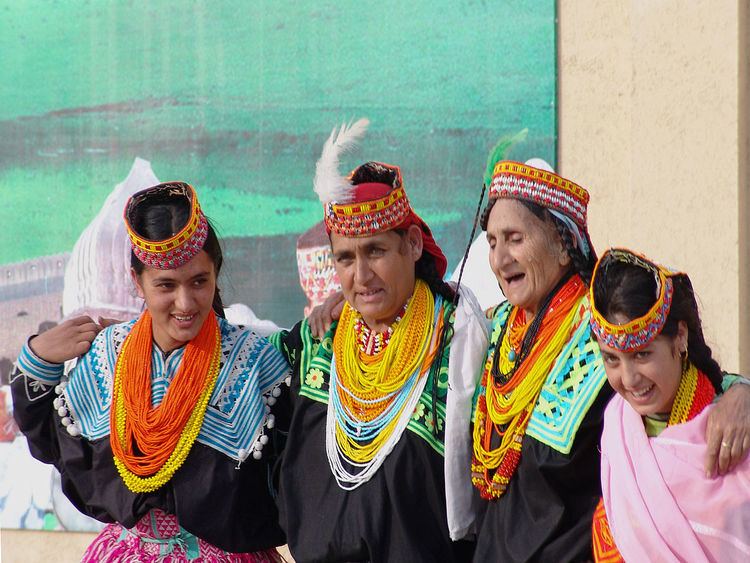Ethnicity Kalash ISO 639-3 kls | Native speakers 5,000 (2000) | |
 | ||
Language family Indo-EuropeanIndo-IranianIndo-AryanDardicChitraliKalasha | ||
Kalasha (also known as Kalashamondr) is an Indo-European language in the Indo-Aryan branch spoken by the Kalash people, further classified as a Dardic language in the Chitral group. The Kalasha language is phonologically atypical because it contrasts plain, long, nasal, and retroflex vowels as well as combinations of these (Heegård & Mørch 2004).
Contents
Kalasha is spoken by the Kalash people who reside in the remote valleys of Bumburet, Birir and Rumbur, which are west of Ayun, which is ten miles down the river from Chitral Town, high in the Hindu Kush mountains in Khyber Pakhtunkhwa province of Pakistan. The Kalash have their own religion, with gods and goddesses. There are an estimated 5,000 speakers of Kalasha.
According to Badshah Munir Bukhari, one of the world's leading authorities on this subject, "Kalasha" is also the ethnic name for the Nuristani inhabitants of a region southwest of the Kalasha Valleys, in the Waygal and middle Pech Valleys of Afghanistan's Nuristan Province. The term "Kalasha" seems to have been adopted by the Kalasha speakers of Chitral from the Nuristanis of Waygal, who for a time expanded up to southern Chitral several centuries ago. However, there is no close connection between the Indo-Aryan language Kalasha-mun and the Nuristani language Kalasha-ala, which descend from different branches of the Indo-Iranian languages.
Until the late 20th century, Kalasha was an undocumented language. More recently, through the work of a Greek NGO and local Kalasha elders seeking to preserve their oral traditions, a new Kalasha alphabet has been created. Working in close collaboration with various international researchers and linguists, Kalasha linguist Taj Khan Kalash organized first "Kalasha Orthography Conference" in Islamabad Pakistan. Having moved to Thessaloniki, Greece, to study linguistics in the Aristotle University, he and the Greek NGO Mesogaia took on the task of compiling the script and creating The Alphabet Book, a primer used to teach the alphabet to the Kalasha children. In 2004 he was able to raise funds to publish the first alphabet book of the Kalasha language based on Roman script designed by an Australian linguist, Gregory R. Cooper.
Of all the languages in the subcontinent, Kalasha is likely the most conservative, along with the nearby western Dardic language Khowar. In a few cases, Kalasha is even more conservative than Khowar, e.g. in retaining voiced aspirate consonants, which have disappeared from most other Dardic languages.
Some of the typical retentions of sounds and clusters (and meanings) are seen in the following list. However, note some common New Indo-Aryan and Dardic features as well.
Phonology
Below is set out the phonology of the Kalasha Language.
Consonants
As with other Dardic languages, the phonemic status of the breathy voiced series is debatable. Some analyses are unsure of whether they are phonemic or simply lexical—i.e., clusters of consonants with /h/.
The phonemes /x ɣ q/ are found in loanwords.
Comparative
The following table compares Kalash words to their cognates in other Indo-Aryan languages.
Grammar
Examples of conservative features in Kalasha and Khowar are (note, NIA = New Indo-Aryan, MIA = Middle Indo-Aryan, OIA = Old Indo-Aryan):
